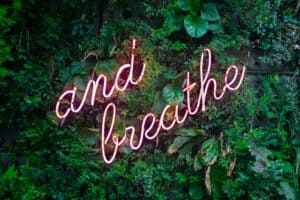Since the advent of the industrial revolution, technological modernization has accelerated the human disconnect from the natural world. In addition, western culture encompasses lifestyles surrounded by high-rise buildings and concrete jungles, which build barriers between nature and humans. And, because of poor urban planning, immigration to cityscapes, lack of funding for education initiatives, and media propaganda, we are seeing an increase in an issue called “Nature Deficit Disorder.” This term was coined by Richard Louv, where he has stated that;
“Scientific evidence suggests that nature-deficit disorder contributes to a diminished use of the senses, attention difficulties, conditions of obesity, and higher rates of emotional and physical illnesses. research also suggests that the nature-deficit weakens ecological literacy and stewardship of the natural world. These problems are linked more broadly to what health care experts call the ‘epidemic of inactivity,’ and to a devaluing of independent play” (Louv, 2019).
Many governments are taking notice of this issue. For example, Iceland’s Forestry Service is encouraging Icelandic citizens to engage in tree-hugging due to COVID-19 increasing lack of socialization. In fact, in the book, Blinded by Science, Matthew Silverstone discovers evidence that confirms hugging trees can help humans with mental illnesses, ADHD, concentration levels, reaction times, depression, and alleviate headaches.
Ironically, in response to COVID-19, many families are reporting behavioral issues and mental disruptions from both children and adults, but because of this, there is now much more public awareness of human and environmental health being intrinsically linked. This is because humans are intimately connected to nature, as we are one and the same. In fact, in his book, Last Child in the Woods, Louv hypothesizes that a large portion of modern society’s depression and anxiety are actually fueled by a true disconnect with nature.

For those reading with a sudden urge to go face plant into a vast flower meadow, luckily, a research study found that spending just two hours a week in nature is associated with an overall increase in well-being and a significant decrease in mental health issues (White et al, 2019). And for those who do not want to hug trees and get sap on their clothes, do not fret, because simply spending time in nature in itself is an essential part of health management.
However, while we wait for the warmer and more inviting spring weather, there are ways to connect with nature in your daily life:
- Add green environment to your home
- From potted plants to garden beds, plants can provide green space to your home, adding oxygen and lowering stress levels.
- Get outside in nature at least 30 minutes a day
- If you are in a city, visualize and do walking meditations on natural landscapes. If you do live somewhere with access to outdoor space, organize socially distanced family activities such as hikes, wild foraging adventures, or bike rides.
- Earthing
- Imagine the earth is a battery, plugged in and circling the sun for energy. This energy is the lifeblood of the ever-changing and moving global atmospheric electron circuit.
- “And pulsating throughout the surface of the planet is an unseen and virtually limitless reservoir of sub-atomic particles called electrons. Constantly replenished and stimulated by the sun, lightning, and the deep-down molten core, they vibrate at different frequencies and give our landmasses and oceans a subtle negative charge” (Earthing Institute – Reconnecting People to the Planet, 2016).
- These negative charges are then absorbed by all life, providing essential sources of antioxidants and free-radical destroying electrons. However, with the advent of modern lifestyles, many humans have lost their “electrical roots” and are naturally disconnected from the constant electric earth connection that keeps us healthy. But, there is a way for humans to harness this rich supply by walking barefoot or the practice of “earthing,” which is simply walking barefoot on soil, grass, sand, or any natural surface.

- Environmental art
- This is the quintessential way to encourage children’s interaction with the earth. By utilizing natural resources, children’s imaginations will do the rest. They can build fairy houses, turn mushrooms and insects into magical storybook tales, or even invent new games.
- Physical contact
- This can involve connecting with the natural world in just the smallest way such as hugging a tree, smelling flowers, or making snow angels.
- Plant-based eating
- Bring nature into the kitchen. Get the whole family involved with preparing and cooking a delicious meal with plant-based ingredients. Let things get messy and allow children to feel a closeness and interest in getting to know the plants on their plates. Adding herbal and mushroom extracts to your daily routine is another great way to connect with the earth, allowing its healing benefits to harmonize and stabilize the body, mind, and soul.

- Governmental changes
- Encourage lawmakers to implement green spaces in community areas, as well as, focus on investment into green urban planning.
